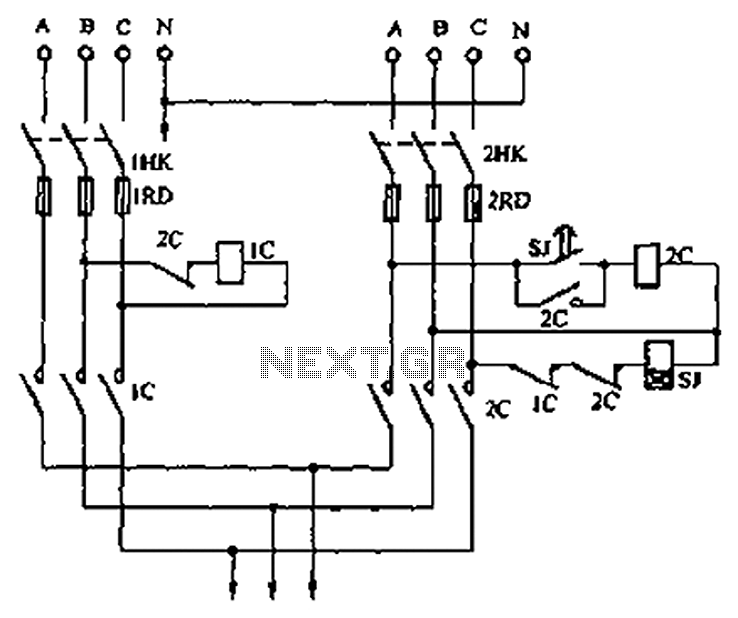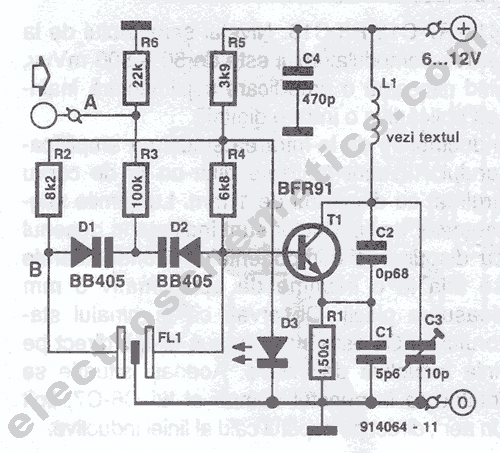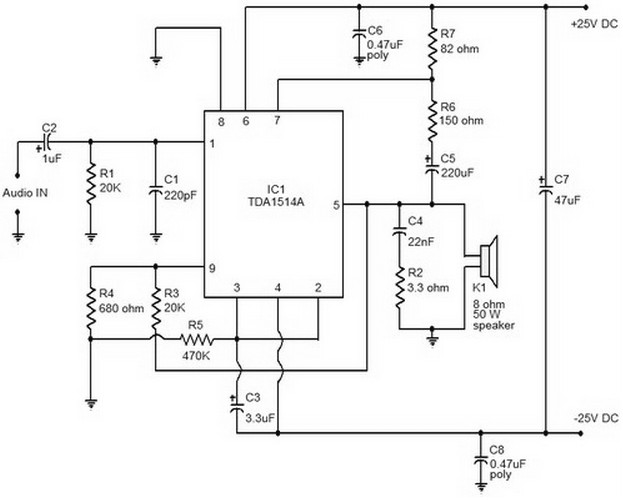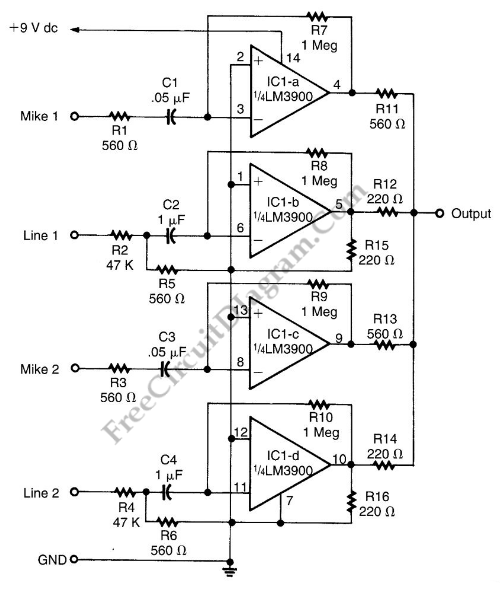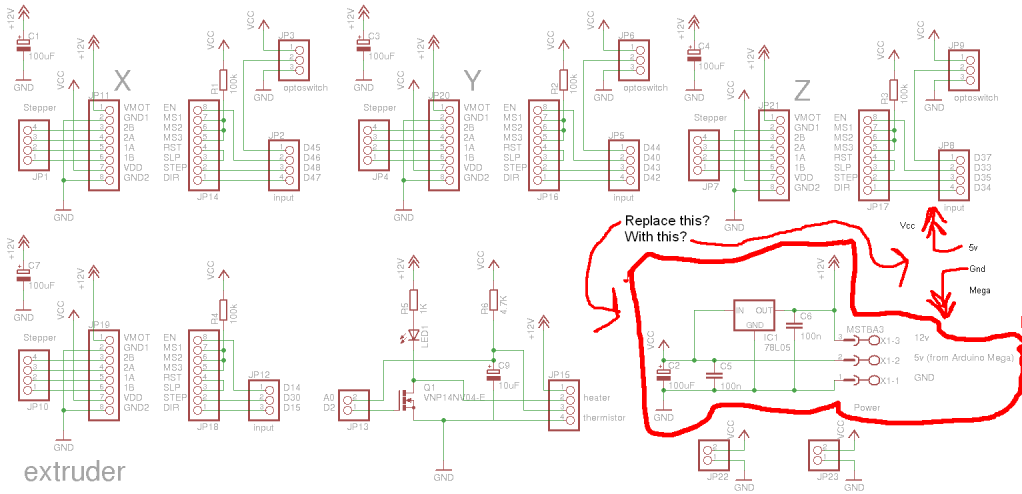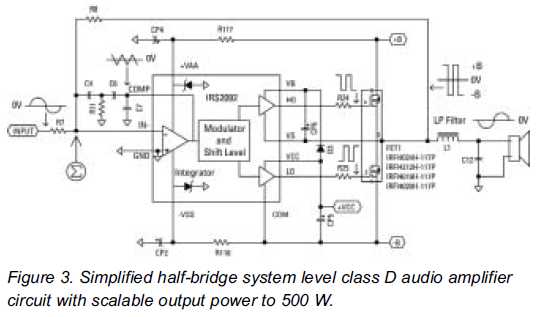
knee audio pads circuit
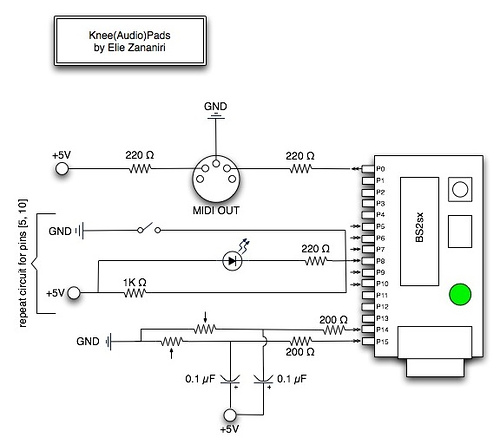
A few nice MIDI controller interfaces were discovered. The Knee(Audio)Pads are a wearable MIDI device.
The MIDI controller interfaces mentioned provide innovative solutions for music production and performance. The Knee(Audio)Pads, in particular, represent a unique advancement in wearable MIDI technology. These devices allow musicians to control software instruments and effects directly from their body movements, enhancing the expressiveness and spontaneity of live performances.
The design of the Knee(Audio)Pads typically involves a combination of sensors and a microcontroller. The sensors, often accelerometers or pressure sensors, detect the movement and pressure applied by the user's knees. This data is then processed by the microcontroller, which converts it into MIDI messages. These messages can trigger notes, control parameters, or send commands to various MIDI-compatible devices, such as synthesizers, drum machines, or digital audio workstations.
The integration of wireless technology is also a significant feature of such devices, allowing for greater freedom of movement without being tethered to a computer or other hardware. Bluetooth or Wi-Fi modules can be incorporated into the design, enabling real-time communication with other devices while maintaining low latency.
Power management is another critical aspect of the Knee(Audio)Pads. These devices typically utilize rechargeable lithium-ion batteries, which provide sufficient power for extended use while maintaining a compact form factor. Energy-efficient design strategies can be employed to maximize battery life, such as using sleep modes when the device is not in use.
In summary, the Knee(Audio)Pads embody a fusion of wearable technology and MIDI control, opening new avenues for creative expression in music. The combination of advanced sensor technology, microcontroller processing, and wireless communication makes these devices a compelling choice for musicians seeking to enhance their performance capabilities.A few nice midi controller interfaces I found. The Knee(Audio)Pads are a wearable MIDI. 🔗 External reference
The MIDI controller interfaces mentioned provide innovative solutions for music production and performance. The Knee(Audio)Pads, in particular, represent a unique advancement in wearable MIDI technology. These devices allow musicians to control software instruments and effects directly from their body movements, enhancing the expressiveness and spontaneity of live performances.
The design of the Knee(Audio)Pads typically involves a combination of sensors and a microcontroller. The sensors, often accelerometers or pressure sensors, detect the movement and pressure applied by the user's knees. This data is then processed by the microcontroller, which converts it into MIDI messages. These messages can trigger notes, control parameters, or send commands to various MIDI-compatible devices, such as synthesizers, drum machines, or digital audio workstations.
The integration of wireless technology is also a significant feature of such devices, allowing for greater freedom of movement without being tethered to a computer or other hardware. Bluetooth or Wi-Fi modules can be incorporated into the design, enabling real-time communication with other devices while maintaining low latency.
Power management is another critical aspect of the Knee(Audio)Pads. These devices typically utilize rechargeable lithium-ion batteries, which provide sufficient power for extended use while maintaining a compact form factor. Energy-efficient design strategies can be employed to maximize battery life, such as using sleep modes when the device is not in use.
In summary, the Knee(Audio)Pads embody a fusion of wearable technology and MIDI control, opening new avenues for creative expression in music. The combination of advanced sensor technology, microcontroller processing, and wireless communication makes these devices a compelling choice for musicians seeking to enhance their performance capabilities.A few nice midi controller interfaces I found. The Knee(Audio)Pads are a wearable MIDI. 🔗 External reference
